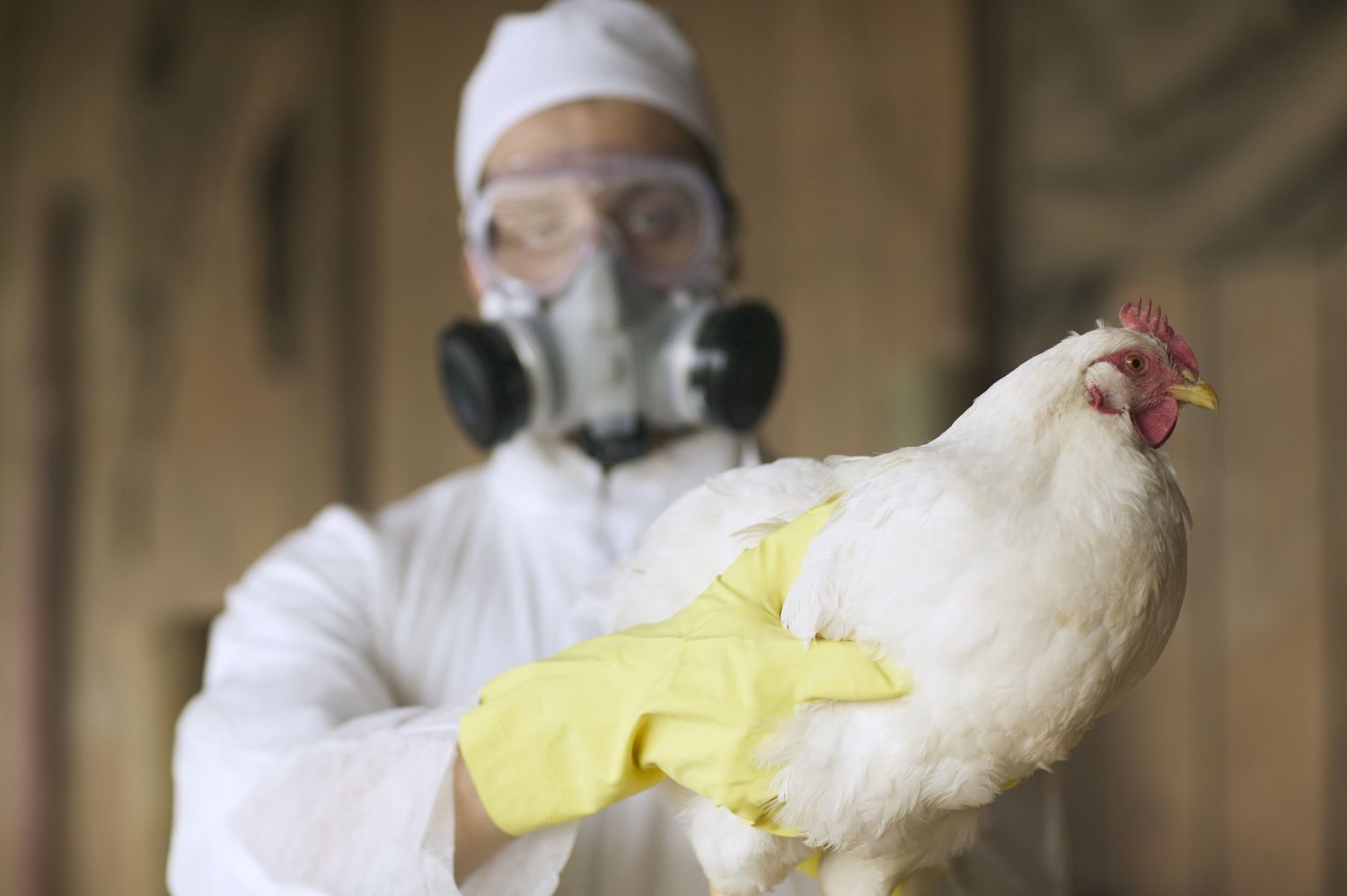The H5N1 flu virus, commonly known as the avian influenza virus, has been a significant public health concern since its emergence. This highly pathogenic strain of the influenza virus primarily affects birds but has also been known to infect humans, leading to severe respiratory illnesses. The virus’s ability to cross species barriers and cause outbreaks in poultry and, occasionally, in humans highlights the need for vigilant monitoring and comprehensive understanding. This article aims to provide a detailed exploration of the H5N1 flu virus, covering its history, transmission, symptoms, treatment, prevention, and global impact.
History and Emergence of H5N1 Flu Virus
H5N1 flu was first discovered in 1996 when the virus was identified in geese in Guangdong province, China. Scientists had to work fast to identify how this virulent strain of influenza occurs, and ways to keep it under control. H5N1 caused an outbreak in Hong Kong in 1997, and severe respiratory disease in humans. Nearly 2 million birds also became sick with the virus and around 1.2 million were slaughtered to prevent the disease from spreading. There was great concern that the virus could jump the species barrier and pass from birds to humans.
There have been sporadic reports of outbreaks in different countries since then, often in poultry, sometimes with substantial associated economic loss in the poultry sector and sometimes with apparent risk to humans. The virus has been able to mutate and change its target hosts, making it an incessant risk. Understanding its emergence and previous evolutionary history is critical to managing its effect.
Transmission and Spread
Currently the most common way for H5N1 flu virus to spread to humans is through contact with infected live or dead birds, or the secretions they produce (saliva, nasal secretions, and faeces), or through contaminated environments bird farmers, poultry workers and people who interact with infected birds or slaughter tainted poultry (proven at live bird markets). Occasionally the virus that has jumped species has spread from one human to another. Mostly it hasn’t. But it might. There has been just one human-to-human transmissions. A few years ago a grandson and two of his siblings became infected with H5N1 influenza after his grandmother died from the disease. Each had cared for the grandmother, told the researchers, with neither the grandmother nor the children having contact with birds. How could that be? How would it have gotten from one person to the next if no one had any contact with birds and the grandmother had been buried and was no longer infectious? It turned out that someone had buried the grandmother in her clothes and the casket was returned to the family by mistake. This is the dilemma that keeps us awake – what will happen if or when H5N1 acquires changes in its amino acid sequence that allow it to spread efficiently among people.
The H5N1 virus spreads around the world by migrating birds that can cross continents and has been detected in almost every country in Asia, Europe, Africa and the Middle East. Being able to monitor locations where the virus has appeared and track migratory birds is one component of surveillance needed to contain the virus and implement control. Global trade and travel routes magnify these containment efforts and must be addressed and managed at an international level.
Symptoms and Diagnosis
The onset of symptoms in humans vary from mild to severe, akin to those of other influenza viruses. There are high fevers, cough, sore throat, muscle aches, and sometimes vomiting and diarrhoea. In severe cases, progression to pneumonia, acute respiratory distress syndrome (ARDS), or even multi-organ failure can lead to a high fatality rate. Early diagnosis and treatment improves patient survival and prevents further spread.
The diagnosis of H5N1 infection is made by laboratory tests, including RT-PCR (reverse transcription-polymerase chain reaction) to detect viral RNA and viral culture and, after the onset of virus shedding, by serological tests that measure antibodies to the virus. Because the symptoms overlap with those of many other respiratory diseases, doctors have to determine if the patient was recently exposed to birds or had a recent history of travel to an area where there was currently an outbreak in order to make a diagnosis of H5N1 infection. Correct and timely diagnosis is essential not only for the management of the patient but also for the control of the outbreak.
Treatment and Management
The standard treatment for H5N1 infection remains antiviral medications, the most common ones being oseltamivir (brand name Tamiflu) and zanamivir (Relenza). These must be given as soon as possible after a person starts to show symptoms of infection, ideally within 48 hours. Patients with serious infection will also receive treatment for any complications, such as oxygen delivered through tubes in the nose, face or lungs (noninvasive or mechanical ventilation) to assist with breathing.
Public health authorities primarily work to contain and prevent outbreaks with H5N1. These efforts include killing infected poultry, bird population surveillance and movement restrictions, and even vaccinating poultry in some areas. There are public health measures for humans as well, including personal protective equipment (PPE) for healthcare workers and campaigns to publicise how they can avoid contact with infected birds. Veterinary and human healthcare sectors must collaborate to best manage outbreaks.
Prevention and Control Measures
Prevention strategies of H5N1 require a ‘one-health’ approach combining animal and human health strategies. In the poultry sector, biosecurity is at the forefront of controlling the introduction and spread of H5N1, which involves regular checking of birds’ health, disposal of dead birds, hygiene through disinfecting of premises and equipment, and vaccination of poultry to reduce viral load and spread.
Public health measures focus on reducing human risk of exposure to infected birds – advising the public to avoid close contact with birds in areas where outbreaks have been detected, including wearing protective equipment such as masks and gloves to handle birds; surveillance systems to detect human cases in a timely manner and rapid response plans in place to control outbreaks; and international information sharing to improve global capacities for preparedness and response.
Global Impact and Future Directions
In rapidly modernising countries, the economic and livelihood impact of the H5N1 flu virus has to be factored in. This is especially true for regions or countries that rely on poultry production for the livelihoods of many people. Each outbreak causes economic losses due to the culling of birds, trade restrictions and reduction in consumer confidence in poultry products. This is a clear indication of the importance of finding sustainable and resilient agricultural practices that lessen the impact of future outbreaks.
Going forward we will require even more research and innovation to improve our knowledge and management of H5N1. The next steps in virology, genomics and vaccinology will hopefully bring more effective counterproductive tools to help us prevent and treat disease. This will require ongoing and improved surveillance of bird populations, wildlife and domestic animals, followed by more precise diagnostic tools that can quickly identify the H5N1 virus in animals and humans. We will also need continued investment in global health infrastructure and expanded international cooperation to put sick people, animals and producers back on their feet. This is the only way we can stop the H5N1 virus from spreading and stop other diseases of emerging infectious diseases from arising.
Conclusion
The H5N1 flu virus remains a significant concern due to its potential to cause severe illness in humans and devastating outbreaks in poultry populations. Understanding its history, transmission dynamics, symptoms, treatment options, prevention strategies, and global impact is crucial for effective management and control. As the world continues to face the challenges posed by this and other influenza viruses, a coordinated and informed approach is essential to protect public health and ensure global preparedness.




